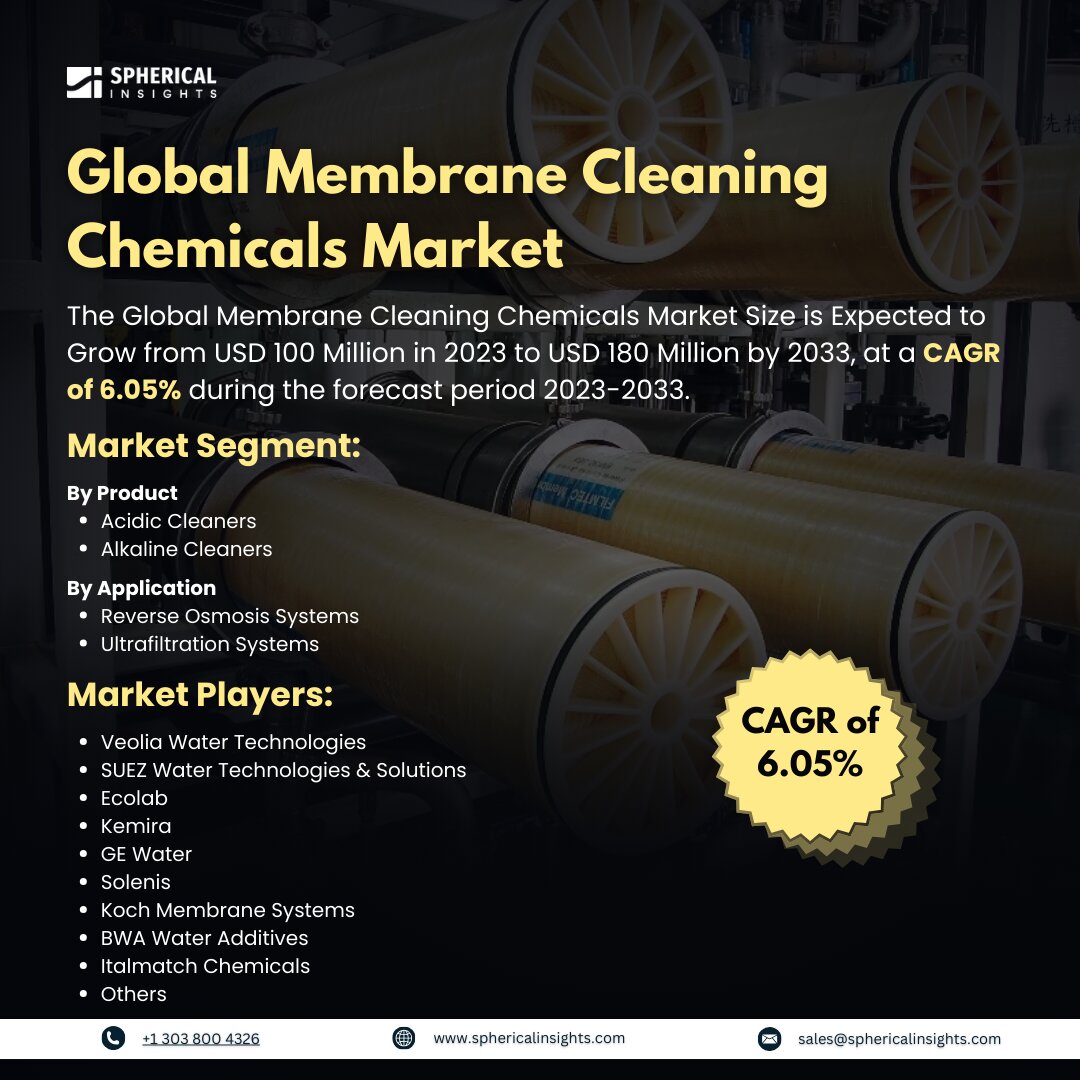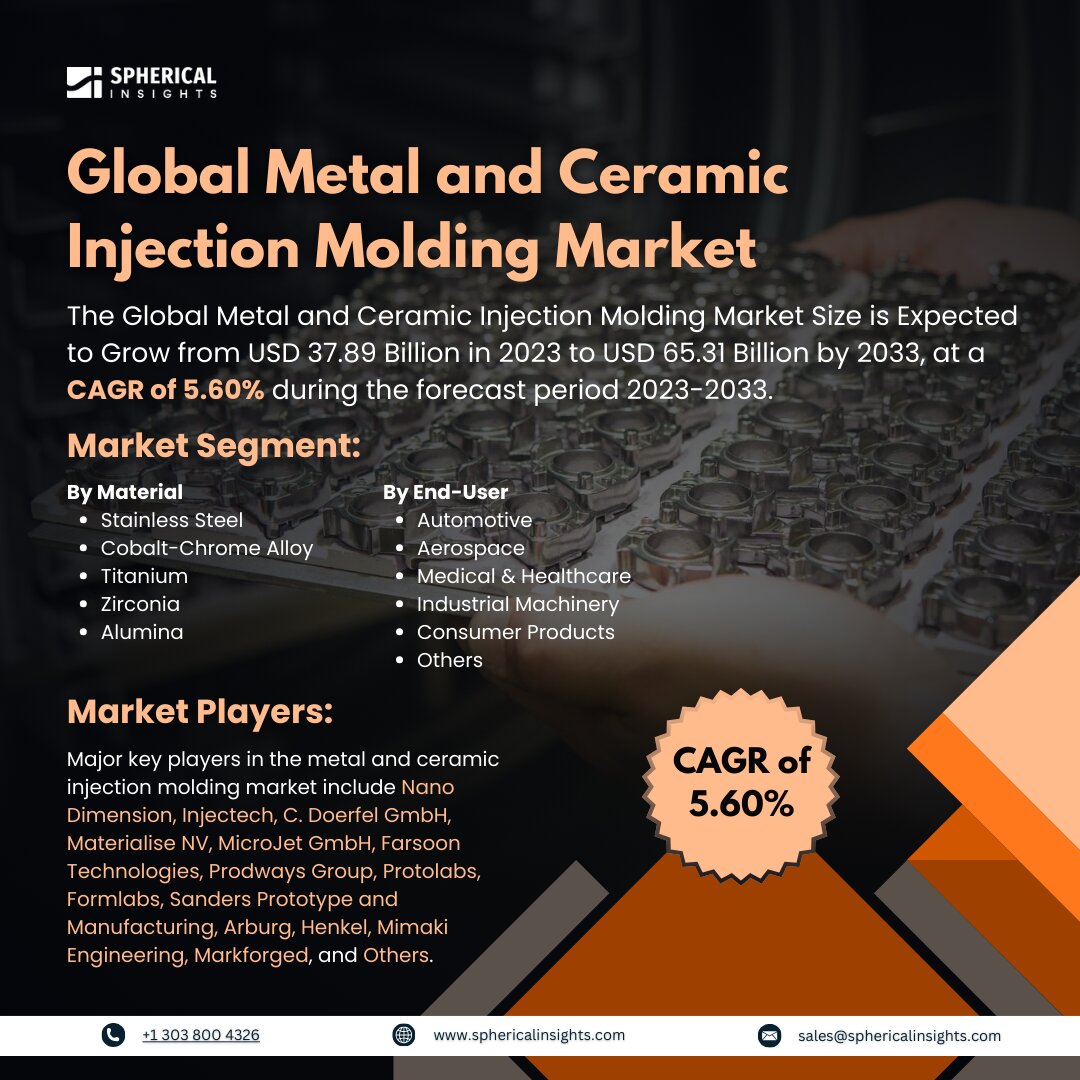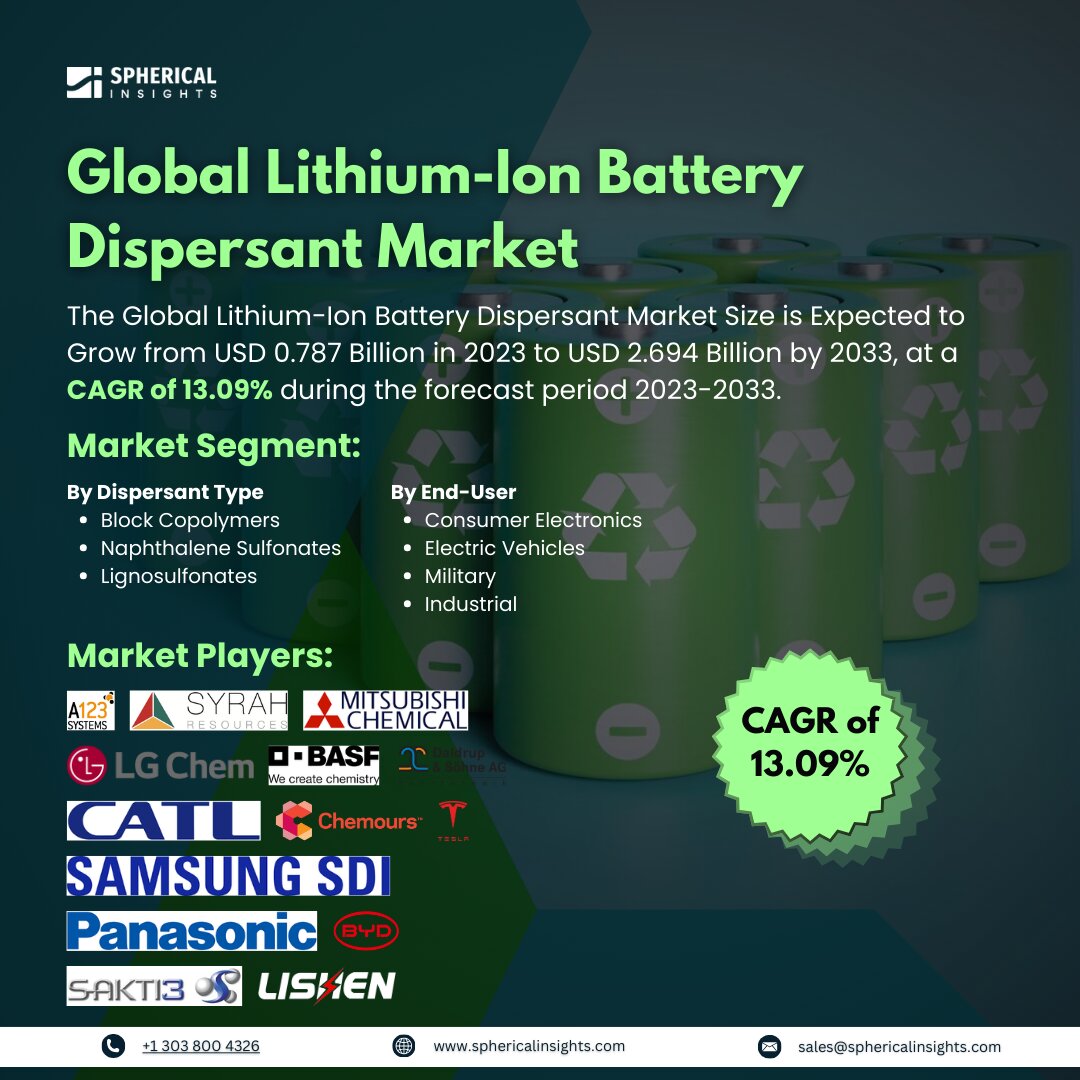Global Membrane Cleaning Chemicals Market Size to Exceed USD 180 Million by 2033
According to a research report published by Spherical Insights & Consulting, the Global Membrane Cleaning Chemicals Market Size is Expected to Grow from USD 100 Million in 2023 to USD 180 Million by 2033, at a CAGR of 6.05% during the forecast period 2023-2033.
Browse 210 market data Tables and 45 Figures spread through 190 Pages and in-depth TOC on the Global Membrane Cleaning Chemicals Market Size, Share, and COVID-19 Impact Analysis, By Product (Acidic Cleaners, Alkaline Cleaners), By Application (Reverse Osmosis Systems, Ultrafiltration Systems), and By Region (North America, Europe, Asia-Pacific, Latin America, Middle East, and Africa), Analysis and Forecast 2023 – 2033
The membrane cleaning chemicals market is chemicals specifically designed to clean and maintain membranes used in filtration systems, including reverse osmosis and ultrafiltration. These membranes can become fouled with scale, organic matter, or biofilms, requiring specialized cleaning solutions to restore efficiency in water treatment and industrial processes. Moreover, the growth of the membrane cleaning chemicals market is propelled by the increased demand for efficient water treatment solutions across various industries. Increasing water scarcity and tighter environmental regulations are forcing municipalities and industries to switch to advanced filtration systems. Further, the demand for specialized cleaning chemicals is rising due to the need to extend membrane lifespan, improve system efficiency, and reduce operational costs. Technological innovations in membrane cleaning solutions that are eco-friendly and affordable with higher performance also contribute to the growth of this market. However, the membrane cleaning chemicals market is hampered by high cleaning chemical costs, the possibility of membrane damage from aggressive chemicals, and a lack of skilled labor for proper membrane maintenance. In addition, the growth of the market is limited by regulatory restrictions on chemical use.
The alkaline cleaners segment dominated the market in 2023 and is projected to grow at a CAGR during the projected timeframe.
Based on the product, the global membrane cleaning chemicals market is divided into acidic cleaners and alkaline cleaners. Among these, the alkaline cleaners segment dominated the market in 2023 and is projected to grow at a CAGR during the projected timeframe. This is because they are effective in removing organic fouling, such as oils, grease, and biological contaminants, which are common in water and wastewater treatment. Alkaline cleaners are versatile, widely used across various industries, and have proven efficacy in maintaining membrane performance and extending its lifespan.
The reverse osmosis systems segment accounted for the highest share in 2023 and is anticipated to grow at a remarkable CAGR during the projected timeframe.
Based on the application, the global membrane cleaning chemicals market is divided into reverse osmosis systems and ultrafiltration systems. Among these, the reverse osmosis systems segment accounted for the highest share in 2023 and is anticipated to grow at a remarkable CAGR during the projected timeframe. The wide application of reverse osmosis in desalination, water purification, and wastewater treatment is leading to the growing demand for clean water and stringent regulations on water quality, hence creating a demand for effective cleaning solutions to maintain system efficiency and prolong membrane lifespan.
North America is anticipated to hold the majority share of the global membrane cleaning chemicals market over the predicted timeframe.
North America is anticipated to hold the majority share of the global membrane cleaning chemicals market over the predicted timeframe. The region's advanced water treatment infrastructure, strict environmental regulations, and significant investments in desalination and water purification drive demand for membrane cleaning solutions. In addition, food and beverage, pharmaceuticals, and power generation industries in North America require efficient filtration systems, further boosting the market for membrane cleaning chemicals.
Asia Pacific is expected to grow at the fastest CAGR in the global membrane cleaning chemicals market during the forecast period. The regional growth due to advanced water treatment technologies is increasingly being sought in countries such as China, India, and Southeast Asia, due to rapid industrialization, urbanization, and increased water scarcity. Investments by governments in water infrastructure and the rising need for desalination and wastewater treatment also contribute to this region's market growth, hence encouraging the use of membrane cleaning chemicals.
Competitive Analysis
Major vendors in the global Membrane Cleaning Chemicals market are Veolia Water Technologies, SUEZ Water Technologies & Solutions, Ecolab, Kemira, GE Water, Solenis, Koch Membrane Systems, BWA Water Additives, Italmatch Chemicals., and Others.
Key Target Audience
- Market Players
- Investors
- End-users
- Government Authorities
- Consulting and Research Firm
- Venture capitalists
- Value-Added Resellers (VARs)
Recent Development
- In March 2024, Toray Industries, Inc. announced a highly durable reverse osmosis (RO) membrane that has the potential to bring significant leaps in water treatment technology. This innovative membrane is expected to improve the efficiency and sustainability of water purification processes.
Market Segment
This study forecasts revenue at global, regional, and country levels from 2023 to 2033. Spherical Insights has segmented the global membrane cleaning chemicals market based on the below-mentioned segments:
Global Membrane Cleaning Chemicals Market, By Product
- Acidic Cleaners
- Alkaline Cleaners
Global Membrane Cleaning Chemicals Market, By Application
- Reverse Osmosis Systems
- Ultrafiltration Systems
Global Membrane Cleaning Chemicals Market, By Regional
- North America
- Europe
- Germany
- UK
- France
- Italy
- Spain
- Russia
- Rest of Europe
- Asia Pacific
- China
- Japan
- India
- South Korea
- Australia
- Rest of Asia Pacific
- South America
- Brazil
- Argentina
- Rest of South America
- Middle East & Africa
- UAE
- Saudi Arabia
- Qatar
- South Africa
- Rest of the Middle East & Africa



